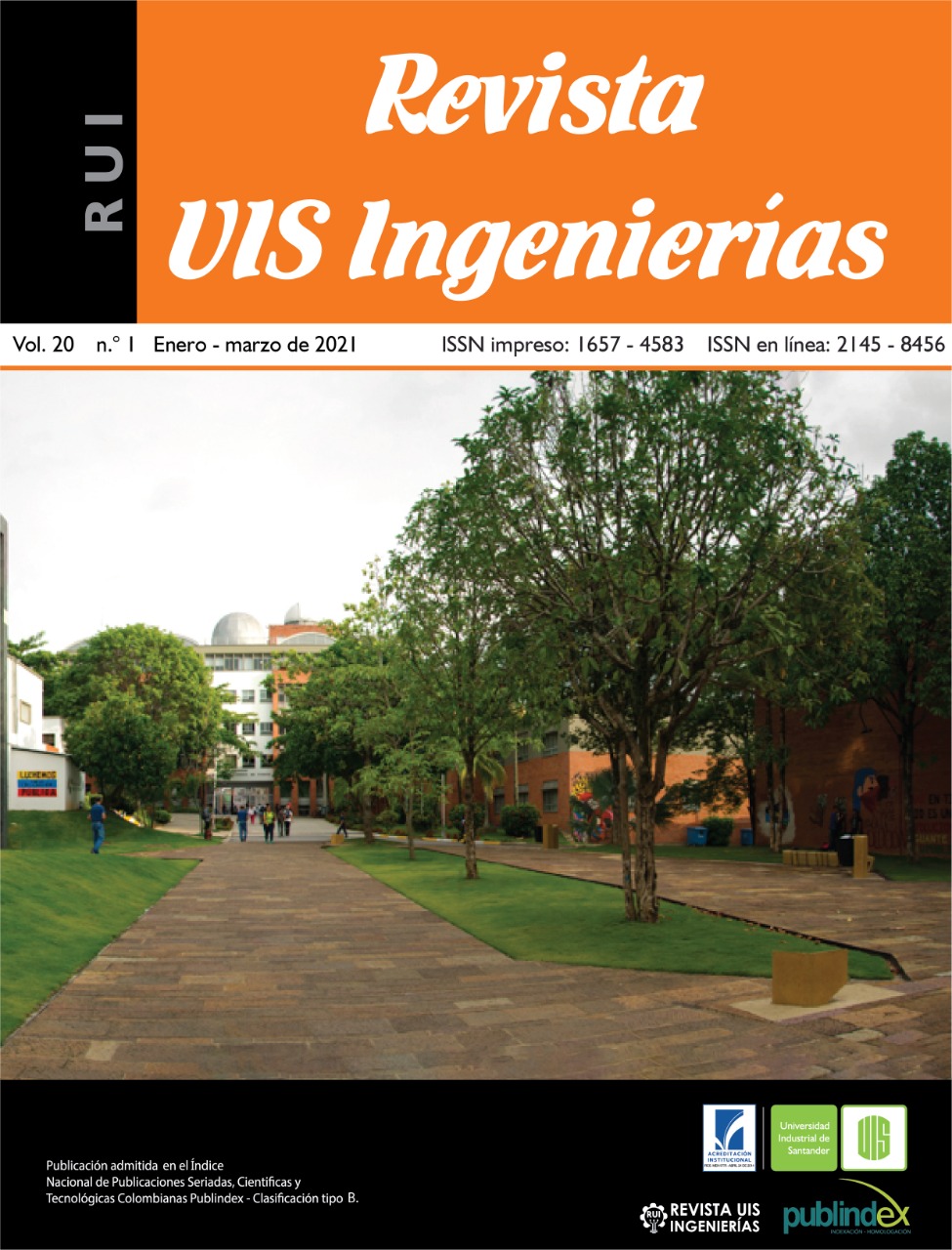Geometallurgical methodology to improve the small-scale gold mining process of the Gualconda mine in Nariño – Colombia
Published 2020-11-10
Keywords
- gold ore,
- hydrometallurgy,
- steady state simulations,
- process mineralogy,
- small-scale mining
How to Cite
Copyright (c) 2020 Revista UIS Ingenierías

This work is licensed under a Creative Commons Attribution-NoDerivatives 4.0 International License.
Abstract
In the gold beneficiation processes, the degree of particle size reduction is strongly influenced by the size and shape of the mineral species associated with the economically important metals. The capacity, energy consumption, and costs of the gold-bearing ore processing depend mainly on the operational parameters of the equipment of comminution and gravimetric concentration; therefore, it is essential to characterize the liberation degree of the minerals of interest as function of particle size. The small-scale mining beneficiation plants usually do not consider the liberation of sulfide particles as a requirement to define the grinding size reduction ratio, this is determined empirically, evaluating in which size a higher percentage of gold recovery is obtained. The methodology proposed in this paper constitutes a low cost analytical technique, using the free software IMAGE-J, to determine the appropriate liberation size for sulfide particles and associated gold particles, as well as the size distribution of gold ore particles. Additionally, the Molycop-Tools software was used to simulate the best grinding strategy based on the liberation results obtained. Through the methodology of automatic image analysis to determine the liberation degree of sulfides, the mineralogical characterization, and the recommendation of a metallurgical processing strategy for the gold-bearing ore based on steady-state simulations, it was possible to establish the appropriate parameters of ball mill grinding and gravimetric concentration of the Gualconda mine in the Department of Nariño, in order to improve the gold recovery and increase the plant capacity.
Downloads
References
[2] O. García, M. M. Veiga, P. Cordy, O. E. Suescún, J. M. Molina, M. Roeser, “Artisanal gold mining in Antioquia, Colombia: A successful case of mercury reduction,” J. Clean. Prod., vol. 90, pp. 244-252, 2015, doi: 10.1016/j.jclepro.2014.11.032
[3] M. M. Veiga et al., “An Affordable Solution for Micro-miners in Colombia to Process Gold Ores without Mercury,” J. Clean. Prod., 2018, doi: 10.1016/j.jclepro.2018.09.039
[4] Ministerio de Minas y Energía, “Plan Estratégico Sectorial para la eliminación del uso del mercurio: La ruta hacia un beneficio sostenible del oro,” Gobierno de Colombia, Bogotá, pp. 1-46, 2016.
[5] Servicio Geológico Colombiano, Guía metodológica para el mejoramiento productivo del beneficio de oro sin el uso de Mercurio: La Lanada y Sotomayor (Nariño). Cali, Colombia, 2018.
[6] W. Petruk, Applied Mineralogy in the Mining Industry, 1st ed., vol. 1. Amsterdam: Elsevier Science B.V., 2000.
[7] R. Castroviejo, E. Berrezueta, R. Lastra, “Microscopic digital image analysis of gold ores: a critical test of methodology, comparing reflected light and electron microscopy,” Miner. Metall. Process., vol. 19, no. 2, pp. 102-109, 2002
[8] J. E. Sepúlveda, “Methodologies for the evaluation of grinding media consumption rates at full plant scale,” Miner. Eng., vol. 17, no. 11-12, pp. 1269-1279, 2004, doi: 10.1016/j.mineng.2004.08.007
[9] J. Segura, L. M. Tavares, “Comparing comminution routes for a Brazilian iron ore using sustainability principles,” Impc 2014, pp. 1-13, 2014.

